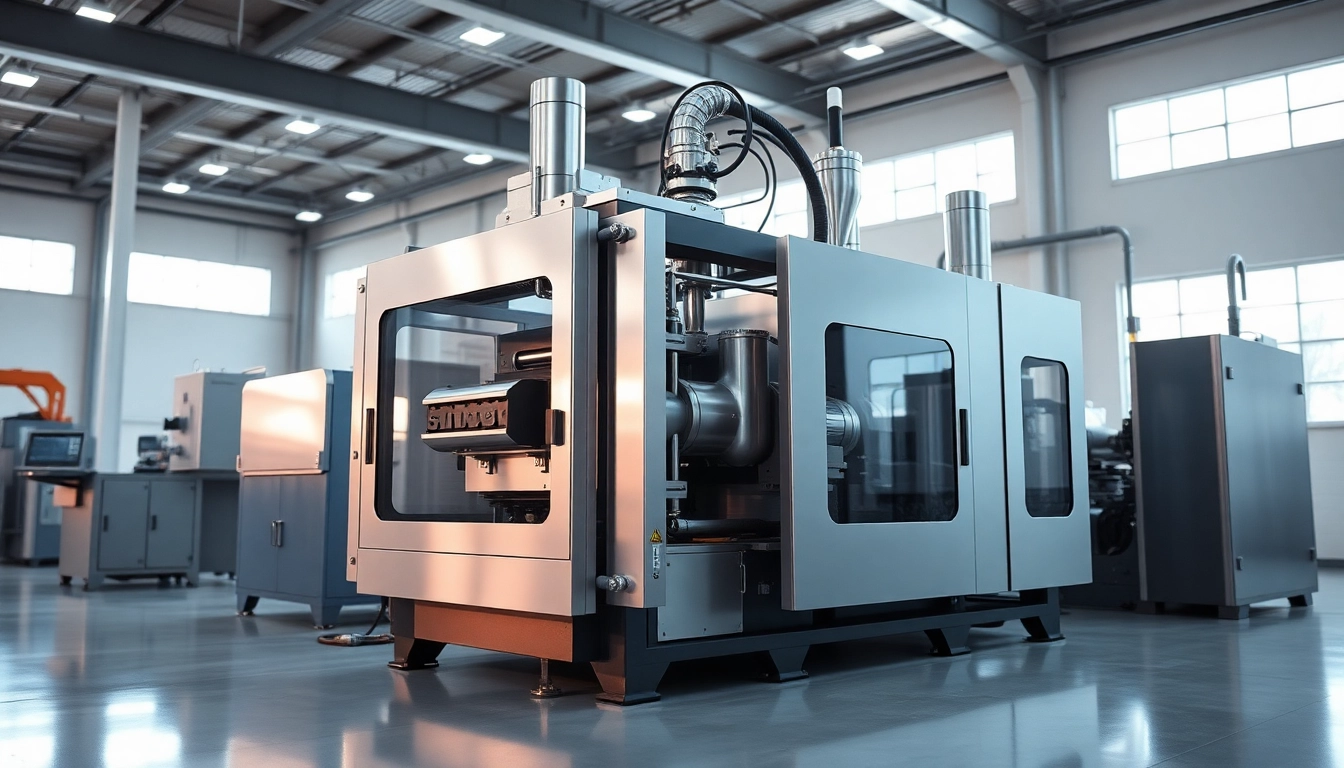Understanding Machine Vision: Technology, Applications, and Benefits for Industries
What is Machine Vision?
Definition and Overview
Machine vision refers to the technology and methodologies employed to enable machines to interpret and understand visual information from the world, effectively allowing them to “see.” It encompasses a combination of hardware and software that captures, processes, and analyzes images to automate evaluation, inspection, and decision-making tasks across various industries. By integrating components such as cameras, sensors, and sophisticated software algorithms, machine vision systems can conduct detailed analyses that were once the sole domain of human operators. This rapidly evolving field provides significant value in ensuring quality control, enhancing productivity, and optimizing operations. For those looking to understand this transformative technology, machine vision serves as an essential component in modern automation strategies.
Key Components of Machine Vision Systems
Understanding machine vision begins with familiarizing oneself with its key components. A typical machine vision system consists of several integral parts:
- Cameras: The primary tool for capturing images; various types exist, including monochrome, color, and 3D cameras.
- Lighting: Proper lighting is essential for high-quality image capture. Different lighting conditions, such as backlighting, ring lighting, or diffuse lighting, can significantly affect the quality of analysis.
- Processing Units: These are typically embedded computers or processors that handle image processing tasks. They use algorithms to interpret visual data and extract useful information.
- Software: The brain of the operation, machine vision software facilitates the configuration, control, and processing of the entire system. It includes image processing algorithms, measurements, and reporting features.
- Interfaces: This is how the machine vision system interfaces with other systems, allowing for seamless integration into the manufacturing or operational processes it serves.
The Role of Machine Vision in Automation
Machine vision plays a pivotal role in the broader context of automation by enhancing the capabilities of traditional manufacturing and operational processes. From quality assurance to inventory management, its applications are numerous:
- Quality Control: Machine vision systems facilitate immediate detection of defects, ensuring only products that meet quality standards proceed to further stages of production.
- Process Automation: By integrating visual data analysis into manufacturing workflows, companies can automate repetitive tasks, reducing human error and enhancing speed.
- Data Collection: Machine vision systems gather vast amounts of visual data, which can then be analyzed to reveal trends, support predictive maintenance, and inform strategic decisions.
Applications of Machine Vision Across Industries
Manufacturing and Quality Control
Machine vision is extensively used in manufacturing to streamline production lines and enhance quality control measures. Systems can inspect products at high speeds for defects, such as misalignments, incorrect dimensions, and surface imperfections. For example, in the automotive industry, machine vision systems are employed to inspect components like circuit boards and wheel assemblies. By ensuring that defective parts are identified and excluded from the production process, manufacturers can significantly reduce waste and improve overall quality.
Healthcare and Medical Imaging
In healthcare, machine vision techniques are employed in medical imaging for more accurate diagnostics. Technologies such as MRI and CT scans utilize machine vision algorithms to enhance image clarity and assist in the identification of anomalies. Furthermore, robotic-assisted surgeries also rely on machine vision to provide precise guidance, allowing for minimally invasive procedures. The ability of machine vision to analyze complex medical images rapidly fosters better patient outcomes and reduces the workload on medical professionals.
Automotive Safety Systems
The automotive industry also leverages machine vision for safety features and autonomous vehicles. Advanced driver assistance systems (ADAS) utilize machine vision to identify and react to road conditions, traffic signs, and pedestrians. Through the integration of cameras and sensors, these systems enhance vehicle safety, helping to prevent accidents and improve overall road safety. Furthermore, ongoing developments in autonomous vehicle technology rely heavily on robust machine vision systems to interpret surrounding environments in real-time.
Machine Vision vs. Computer Vision
Understanding the Differences
While machine vision and computer vision may appear similar, key differences exist. Machine vision focuses on processing and interpreting images for specific industrial applications, primarily for quality inspection and alignment tasks. Conversely, computer vision encompasses a broader range of capabilities, including advanced AI applications such as facial recognition and scene understanding. In essence, machine vision is a subset of computer vision, tailored for industrial use cases, whereas computer vision extends into diverse fields including healthcare, security, and entertainment.
Complementary Technologies
Machine vision does not operate in isolation. It often works in conjunction with other technologies such as robotics, artificial intelligence, and data analytics. For instance, when integrated with AI algorithms, machine vision systems can learn from past inspection data, enabling predictive maintenance and anomaly detection beyond standard operational capabilities. This symbiotic relationship between machine vision and complementary technologies enhances overall operational efficiencies.
Real-World Use Cases
Real-world applications of machine vision are vast and varied. In agriculture, drone-based machine vision is used to monitor crop health and optimize yield. In retail, machine vision can help automate checkout processes and manage inventory more effectively by recognizing products and keeping track of stock levels. Such examples underscore machine vision’s adaptability and increasing importance in various sectors beyond the traditional manufacturing paradigm.
Implementing Machine Vision Systems
Evaluating Your Needs and Infrastructure
Before implementing a machine vision system, it’s crucial to assess organizational needs and existing infrastructure. Businesses should begin by defining specific goals for implementation—such as improving quality control, enhancing operational efficiency, or automating data collection. This involves a thorough evaluation of current processes to identify inefficiencies and areas where machine vision could offer significant benefits.
Steps to Integration
Integrating machine vision into existing operations involves several key steps:
- System Design: Collaborate with machine vision experts to design a tailored system that aligns with your goals and infrastructure.
- Pilot Testing: Testing a small-scale implementation allows businesses to understand system capabilities and calibrate the hardware and software as needed.
- Full Deployment: Once satisfied with pilot results, the system can be deployed across the operational spectrum, ideally with minimal disruption.
- Ongoing Evaluation: Regularly assess system performance against established KPIs to ensure it continues to meet organizational objectives.
Best Practices for Operation
To maximize the effectiveness of machine vision systems post-deployment, several best practices should be adopted:
- Regular Maintenance: Ensure hardware and software are updated regularly to prevent operational downtimes and maintain accuracy.
- Training Personnel: Equip staff with the necessary training to operate and maintain the machine vision system effectively.
- Data Analysis: Utilize collected data for ongoing analysis, leveraging insights to further enhance processes and make informed decisions.
Future Trends in Machine Vision Technology
Advancements in AI and Robotics
The future of machine vision is closely tied to advancements in artificial intelligence and robotics. As AI algorithms improve, machine vision systems will become capable of more sophisticated analyses, enabling real-time, autonomous decision-making. Developments in deep learning and neural networks promise enhancements in visual recognition accuracy, enabling even more complex tasks to be automated.
Market Growth and Opportunities
The machine vision market is projected to undergo substantial growth in the coming years, driven by increased adoption across numerous sectors. From manufacturing to healthcare, the expanding recognition of the cost-saving and efficiency-boosting capabilities of machine vision presents opportunities for innovation and market entry. Companies focusing on developing niche applications of machine vision can find a welcoming environment as industries increasingly lean on automation.
Challenges in Adoption
Despite its benefits, the adoption of machine vision technologies does not come without challenges. Integration with existing systems can pose technical difficulties, and the initial investment for implementing machine vision systems may be significant. Furthermore, organizations may face resistance to change from employees accustomed to existing processes. To navigate these challenges, businesses must prioritize effective change management strategies, invest in employee training, and adopt a phased approach to integration.














Post Comment